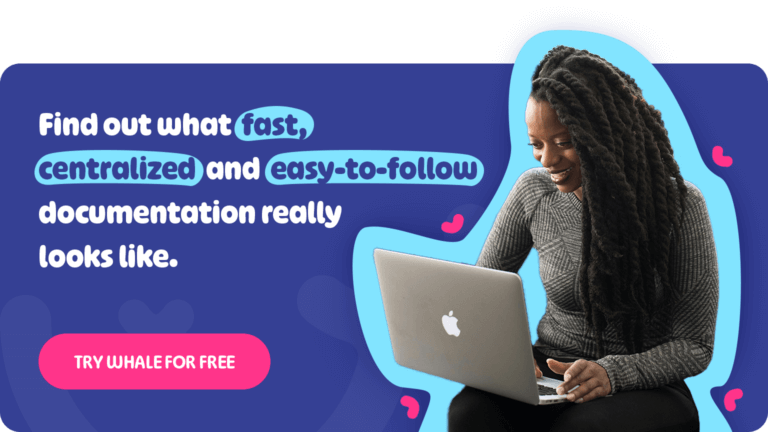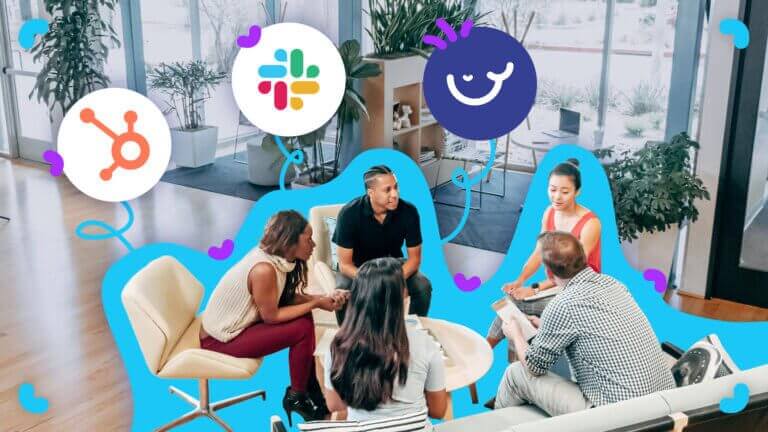The “People, Process, Technology” framework is a holistic approach to growth and to overcoming common growth challenges. It hypothesizes that for an organization to operate efficiently and innovate, it must balance and integrate three critical elements: the skills and capabilities of its people, the processes that guide actions, and the technology that supports tasks.
This balance ensures that the business can achieve its goals in an efficient manner. The interlinking of these elements suggests that focusing on one area without considering the others will likely lead to suboptimal outcomes.
Today, we’re talking how to use the people, process, and technology framework to get aligned.
What is the people, process, and technology framework?
Most business leaders rely on the widely-used People Process Technology framework to navigate organizational change.
Originating in the 1960s, Harold Leavitt’s “Diamond Model” illustrated the importance and interconnectedness of structure, people, technology, and tasks within organizations. It emphasizes that changes in one area impact the others, necessitating comprehensive evaluation and management for successful change.
Over time, structure and tasks were merged into “process,” transforming the model into a “golden triangle” or “three-legged stool” comprising people, process, and technology.
Interlinking People, Process, Technology 🏎️
One might think that the PPT framework is necessary only for big enterprise organizations, but the interconnection between people, process, and technology in startups and scale-ups is critical.
For these companies, aligning skilled and motivated teams with efficient processes and supportive technology can be the difference between success and failure.
To explain how people, process, and technology work together, we thought we’d use the example of Formula1.
- Without the right drivers and engineers (PEOPLE), you may have a great car, but you’ll have no one to drive it.
- If you haven’t figured out how to change the tyres in less than 2 seconds and how your driver should box (PROCESS), then even if you have the best car and the best driver, you’ll lose too much time.
- And f you don’t have a super aerodynamic fast 🏎️ car (TECHNOLOGY), you may have the best drivers, but you still won’t be able to stand on the podium.
Makes sense in Formula1 but what about business?
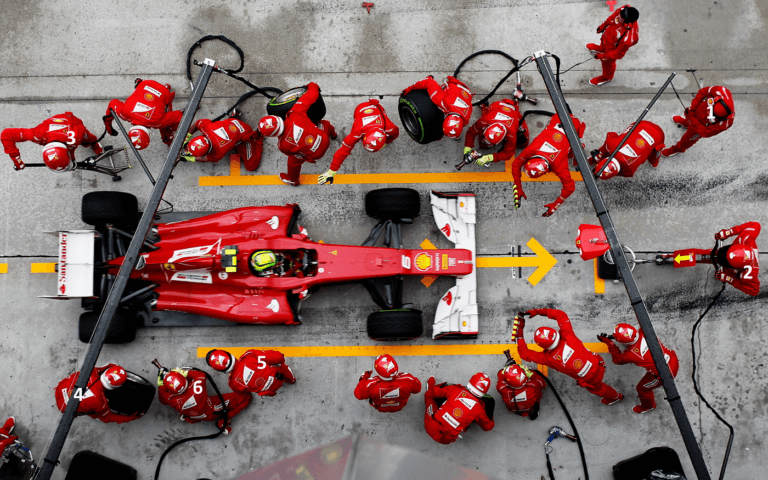
Consider this example of a healthcare tech company scale-up;
A HealthTech scale-up devises a digital marketing strategy to increase its market presence. This strategy involves using advanced analytics technology to understand customer behaviors, an iterative process for campaign development and execution, and a team skilled in digital marketing tactics. Similarly, using an online assessment platform could streamline your hiring process by efficiently evaluating potential candidates, ensuring you select the best fit for your team.
The synergy between technology (analytics and marketing platforms), process (iterative, data-driven campaign development), and people (marketing team) allows the scale-up to effectively reach and engage its target audience, driving growth and brand awareness.
As the team works, they figure out their winning marketing proces, which they can use to repeat successful campaigns in the future.
How to use the people, process, technology framework to get aligned
You know, what’s really cool about the PPT Framework is how it brings everything together. Instead of just trying to fix one thing at a time, it looks at the big picture. It’s all about understanding how different parts work together and making them better as a whole.
Think about it like this: when you’re introducing new technology in a company, you can’t just throw it in and hope for the best. You need to make sure it fits with how people work and the systems already in place. And on the flip side, even the best tech won’t do much if your team isn’t skilled or motivated to use it.
So, the PPT Framework says, “Hey, let’s not treat people, processes, and technology like they’re separate things. They’re all connected, and they all matter.” When you start seeing them as part of one big puzzle, you can create a strategy that works for everyone.
That’s where the magic happens.
By following this approach, businesses can come up with a game plan that lines up perfectly with their goals. And when everything’s in sync, that’s when you see real growth, innovation, and competitiveness. It’s like giving your organization superpowers to tackle whatever challenges come its way in today’s ever-changing business world.
What are the different elements in the people, process, and technology framework?
People

In the context of this framework, “People” refers to the employees, stakeholders, and customers involved with a business. Their skills, experiences, and motivations are crucial for the effective use and development of processes and technology. And obviously for the growth of the company.
How it looks in action?
🎯 The goal here is to get the right people in the right seats
Make sure to;
- If you’re running on EOS, use the EOS® People Analyzer™ to help you evaluate if you have the right person in the right seat. Alternatively, use a hiring process template to make sure you attract the right talent from the get-go.
- Onboard and train your team members on processes.
- Create a culture of Continuous Learning
And obviously, make sure you create an environment where people love to work!
We try to do this at Whale from day 1 with a great employee onboarding program. We even started an internal podcast where people can learn about their colleagues.
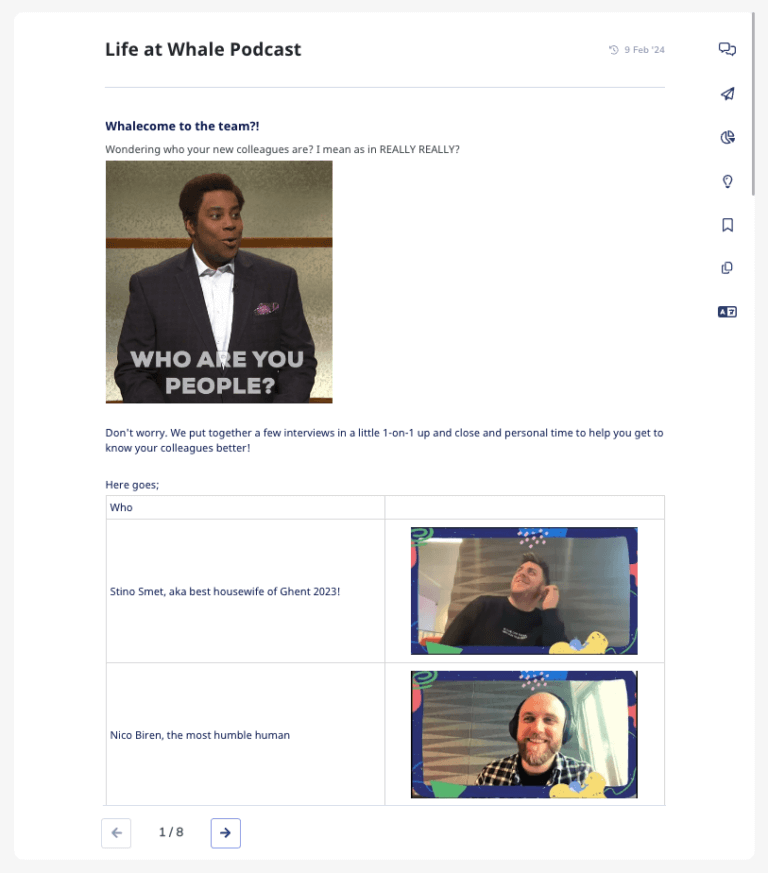
Process
“Process” encompasses the procedures, standards, and workflows that structure the activities within the business. Processes are designed to enhance efficiency, quality, and predictability. It’s all about what’s going to be done and how.
How it looks in action?
🎯 The goal here is to identify what works and keep improving in that!
Make sure to;
- 💪 Document core processes to train new team members in record time
- Review and update processes (this can be done with automated reminders on Whale)
- Not to make these common mistakes in documenting process.
Technology
In 2024, and beyond, you can’t be working on paper!
“Technology” refers to the tools, systems, and infrastructure that support the activities of an organization. This can range from IT hardware and software to machinery and equipment. The trick is to ensure that the technology works with the people and the process and actually adds value to the business.
How it looks in action?
🎯 The goal here is to identify what tools are needed that will help you unlock growth in the business.
Make sure to;
- 💪 Utilize tools (like Whale) that help you scale
- Embrace digital transformation – remember that the world’s best teams utilize technology
- Consider how AI can help you reduce workload and optimize productivity.
Use cases for the people, process, and technology framework
The PPT framework can be particularly relevant for small and medium-sized enterprises (SMEs) or scaling businesses as they navigate growth challenges, enhance operational efficiency, and strive for competitive advantage.
Here are 2 use cases for the PPT framework in this context:
Digital Transformation
- People: Training staff to adopt new digital tools, fostering a culture of continuous learning.
- Process: Streamlining operations and automating repetitive tasks to improve efficiency.
- Technology: Implementing new software solutions (e.g., CRM, Employee onboarding software) to support business operations.
Enhancing Customer Support
- People: Assess the skill level and training of your customer service team. Are they adequately trained
- Process: Review the current customer service processes. Streamlining these processes can significantly improve customer satisfaction.
- Technology: Implement or upgrade to a customer relationship management (CRM) system that can automate queries, making it easier for your team to respond quickly and effectively.
Bottom Line?
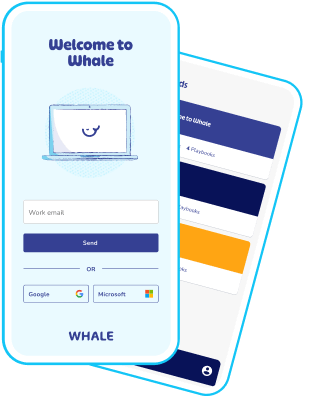
Over the past thirty years, the landscape of business and technology has undergone significant transformations. However, amidst these changes, the People Process Technology framework has remained a cornerstone model.
In fact, its relevance may have increased in light of these profound shifts. To thrive, businesses now face the imperative of delivering innovative solutions at a rapid pace, exercising tighter control over risk management, and meeting increasingly demanding expectations.
In 2018, McKinsey released research that depicted a new operating model of business as “a living organism” as opposed to a machine. In the research, they stated 5 critical elements of this agile model, including;
- Strategy – where the North Star is embedded across the organization.
- Structure – having a network of empowered teams.
- People – which consists of rapid learning cycles and continuous improvement.
- Process – dynamic people model that is purpose-driven and where each team member takes entrepreneurial style ownership.
- Technology – that encompasses next-generation technology to empower the above elements.
Skillfully orchestrating their workforce, operational workflows, and technological infrastructure during periods of flux can furnish the clarity and comprehension needed to accomplish these objectives effectively.
FAQs about people, process & technology (PPT)
What is PPT?
People, process & technology highlights the critical link between the people, processes and technology in an organization. At it’s core, it’s a strategic model to drive optimum efficiency.
What are examples of PPT in practice?
Here some examples of when you would use PPT to diagnose and solve a business challenge.
For example;
- Employees are taking too long to complete routine tasks.
- Your employees are not using the most efficient workflows.
- You aren’t utilizing automated workflows where possible.
- You aren’t innovating or aren’t achieving competitive advantage.



